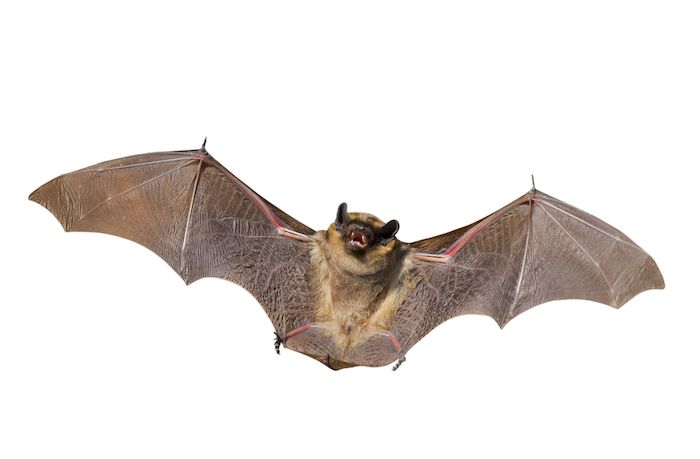
Bats navigate by somehow constructing an image of the external world from the echoes of their squeaks. Since bats have but two ears, one wonders how they can develop a three-dimensional image from a two-dimensional sensor; ie., two ears give right-and-left information only. The moustache bat makes up for this deficiency by generating echo-locating pulses at three distinct harmonics: 30, 60, and 90 kilohertz.

A bats external ears are so shaped that each of these three frequencies has a different acoustic axis, giving the bat in effect three separate sets of ears pointing in three different directions. Inside the bat’s head, in the inferior colliculus of the brain, are three sepa rate sets of neurons sensitive to the three different frequencies. No one knows how the bat processes such information into a “display” it can use in swooping after insects at night.

This is a modal window.
What is Echolocation?
Echolocation calls are produced at constant frequencies (CF calls) and varying frequencies that are frequently modulated (FM calls). Most bats produce a complicated sequence of calls, combining CF and FM components. Target velocity is carried by the difference between the emitted pulse and the returning echo CF (that is, the Doppler shift) and distance information is carried by a difference in projected and returning FM sounds (that is, the echo delay), (Suga & Yan, 1996). The nuclei of the lateral lemniscus (tract of axons ascending the brainstem) play an important role in processing timing information that is essential for target range determination in echolocation (Huffman, Argeles & Covey, 1998).
To increase the limited range of sounds, bats produce high intensity calls. The loudness can vary from as low as 50dB and as high as 120 dB, which is louder than a smoke detector 10cm from your ear. The little brown bat Myotis lucifuguscan emit such intense sound. If these sounds directly stimulated the ears, hearing would be impaired (Suga & Shimozawa, 1974).
effect) (Suga & Schlegel, 1972). (iv) There is indication of neural attenuating mechanism operating synchronously with vocalisation (Suga & Shimozawa, 1974). This neural attenuating mechanism was found by measuring the responses of the primary auditory neurons. The mechanisms for neural attenuation are not yet known but it is known that it takes place between the cochlear nerve and the inferior colliculus. The attenuation by neural events is thought to be as much as 10-15dB (Suga & Shimozawa, 1974). It is thought that the duration of the inhibitory period is very short because anything longer than a few milliseconds would interfere with echo detection.
The moustached bat (Pteronotus parnelli rubiginous) emits a vocal sound which consists of a CF component and a FM component, each component is made up of four harmonics therefore each sound emitted comprises of eight harmonics. The emitted sound overlaps with the echo of the previous call; as a result biosonar information must be extracted from a complex sound with up to 16 components (Suga & ONeill, 1979). With many conspecific bats echolocating in a confined space their many sounds and echos would impair ‘echo-imaging’ unless some mechanism protected the system from jamming (Suga & O’Neill, 1979). The moustached bat overcomes this interference by suppressing the first harmonic of its call so that it is much weaker than the other harmonics and that other bats are unable to hear it. However the bat hears its own harmonic directly by bone conduction between the vocal chords and cochlea. The bat does not respond to the weak first harmonics of other bats and is therefore not confused by their presence (Altringham, 1996).






























